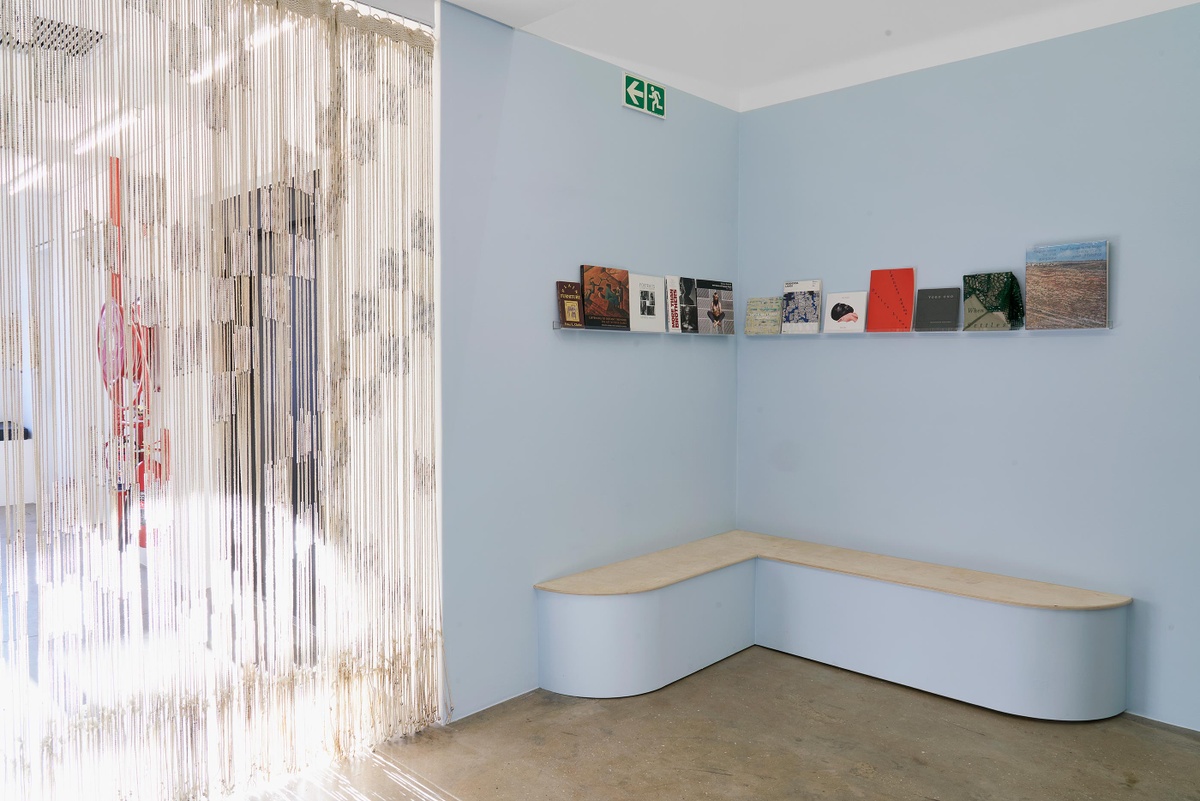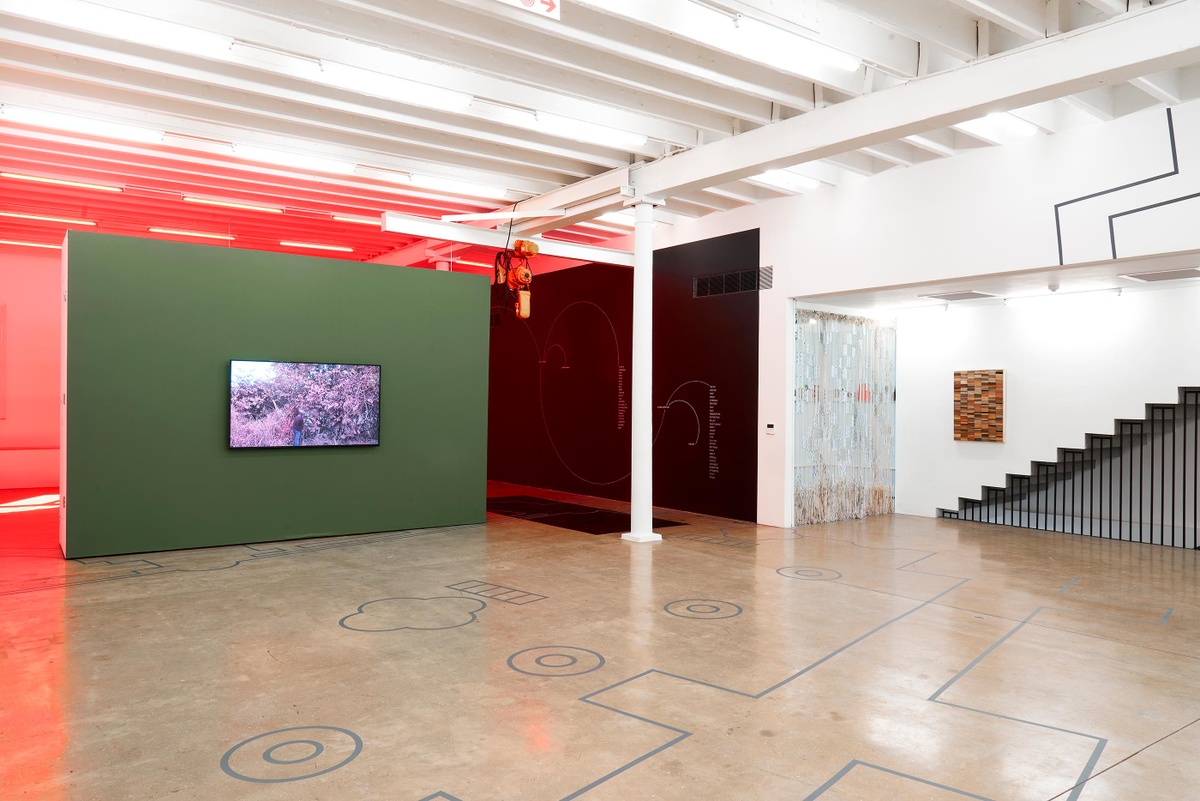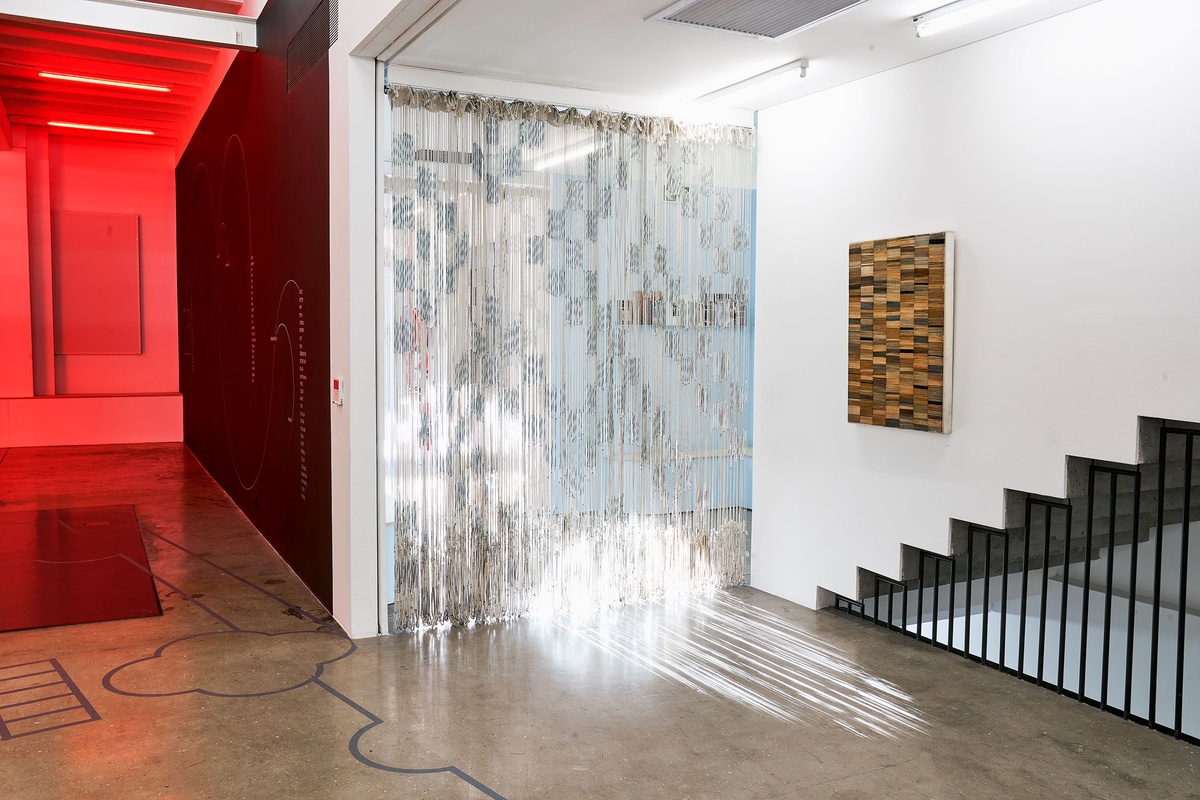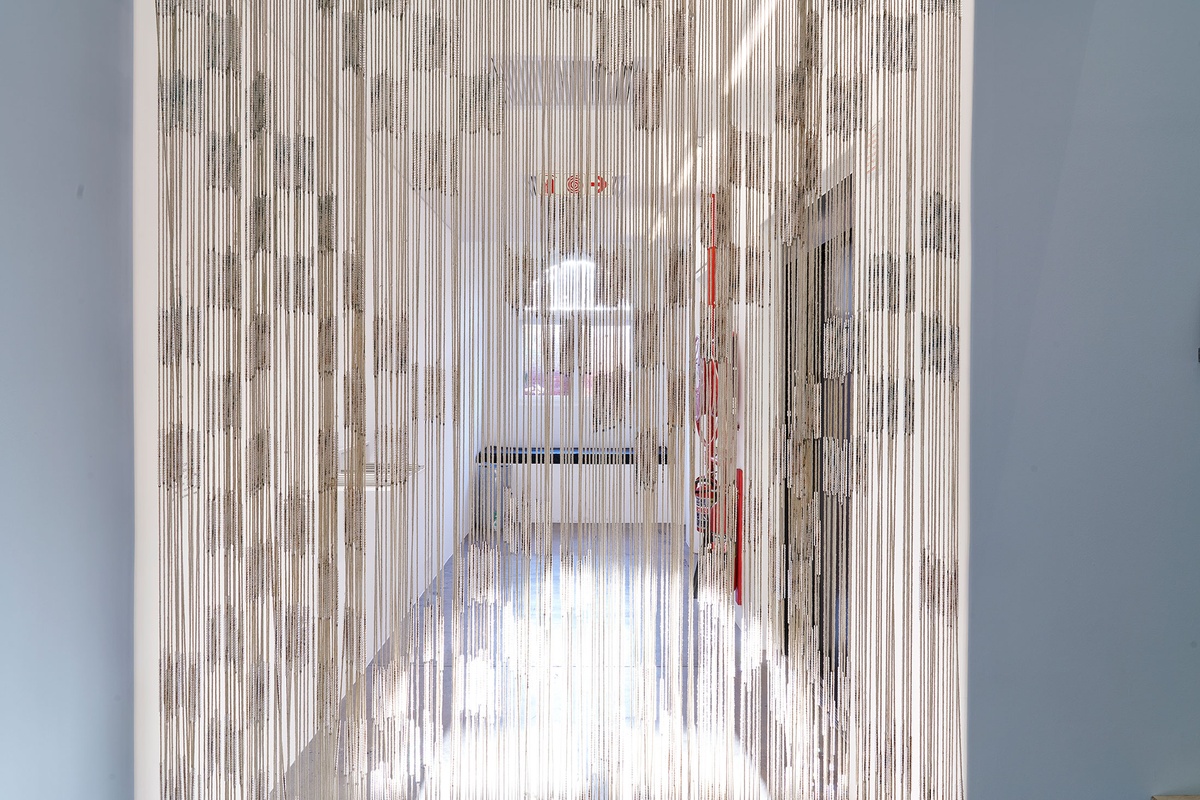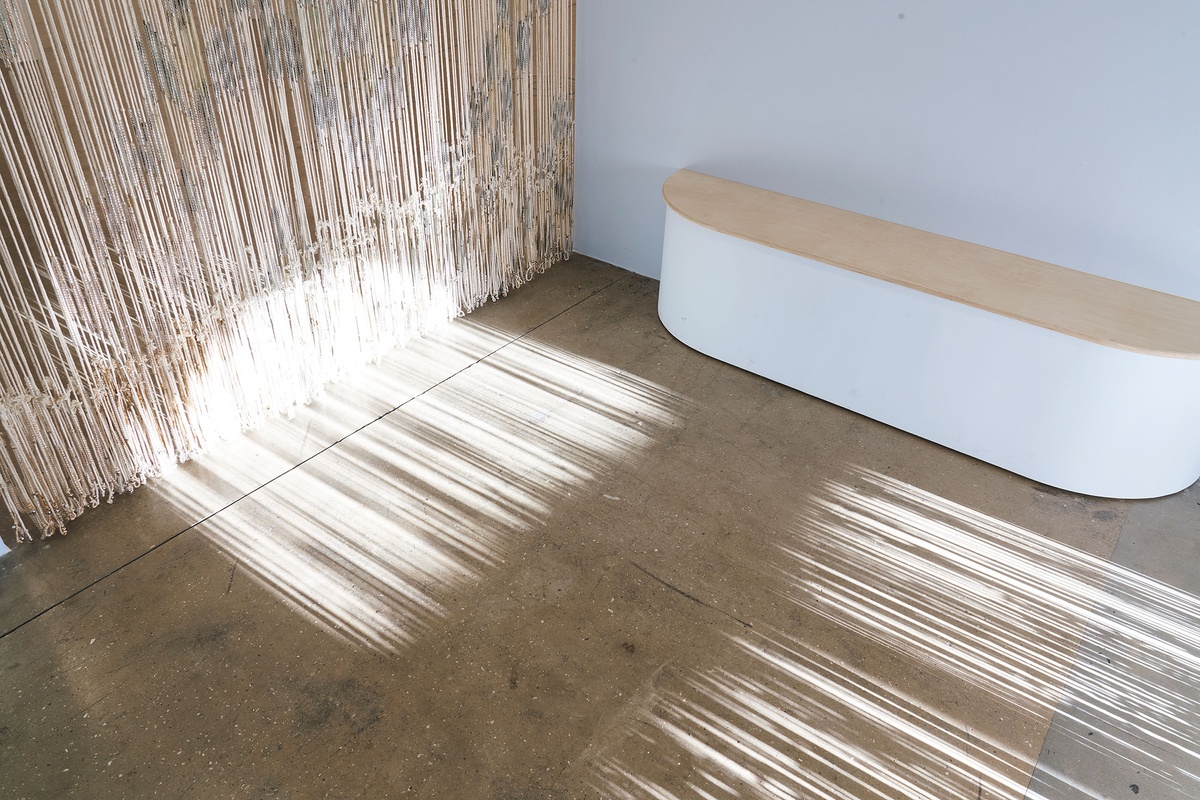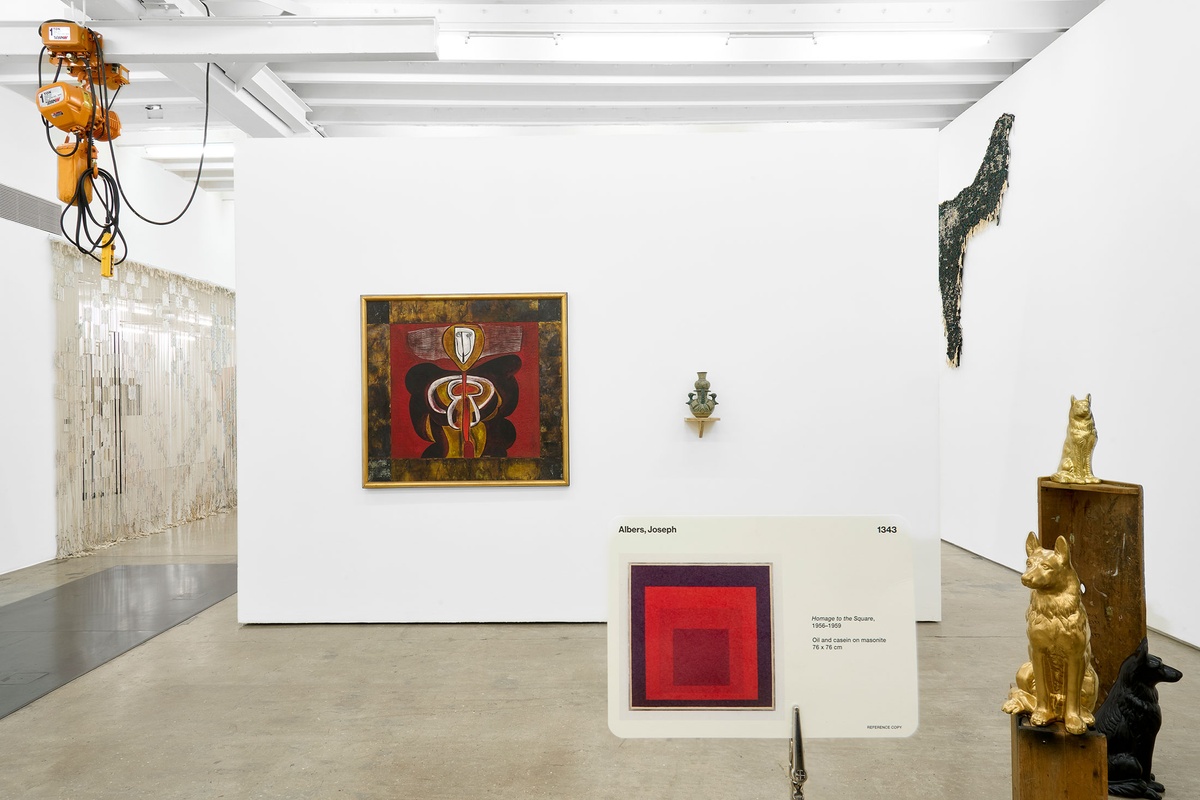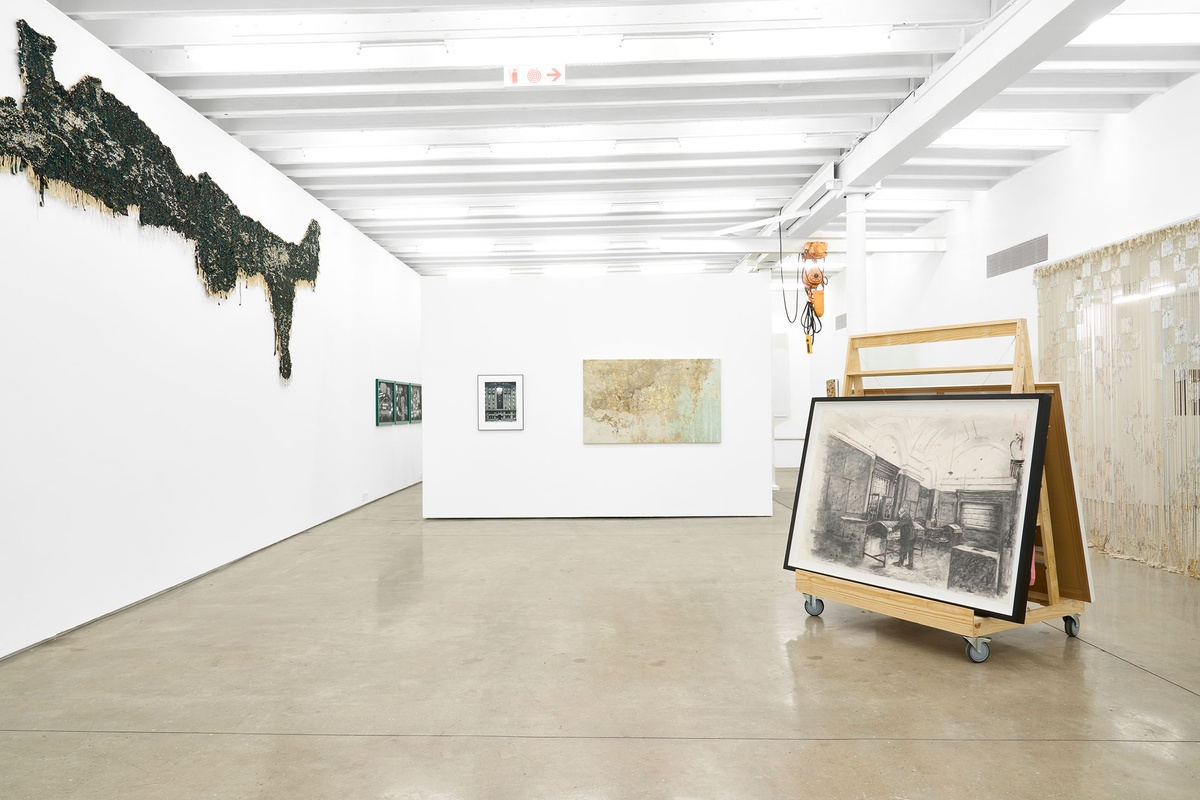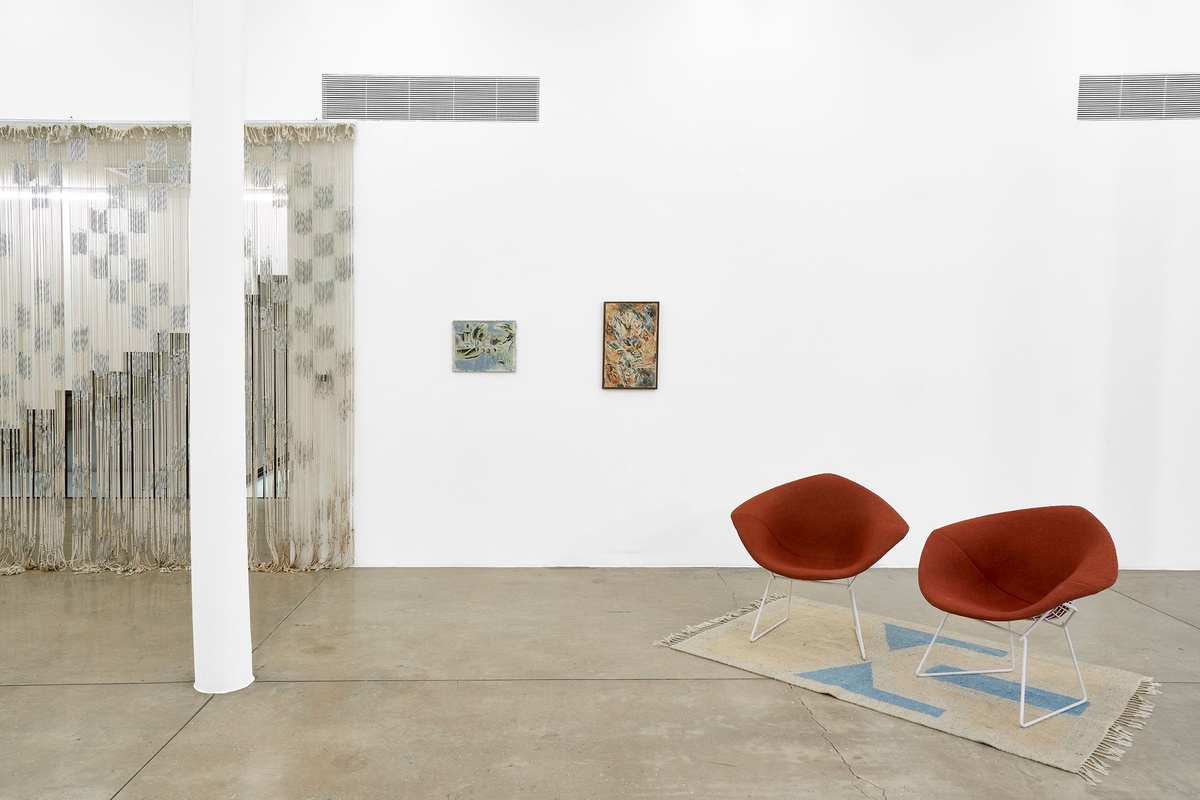Igshaan Adams
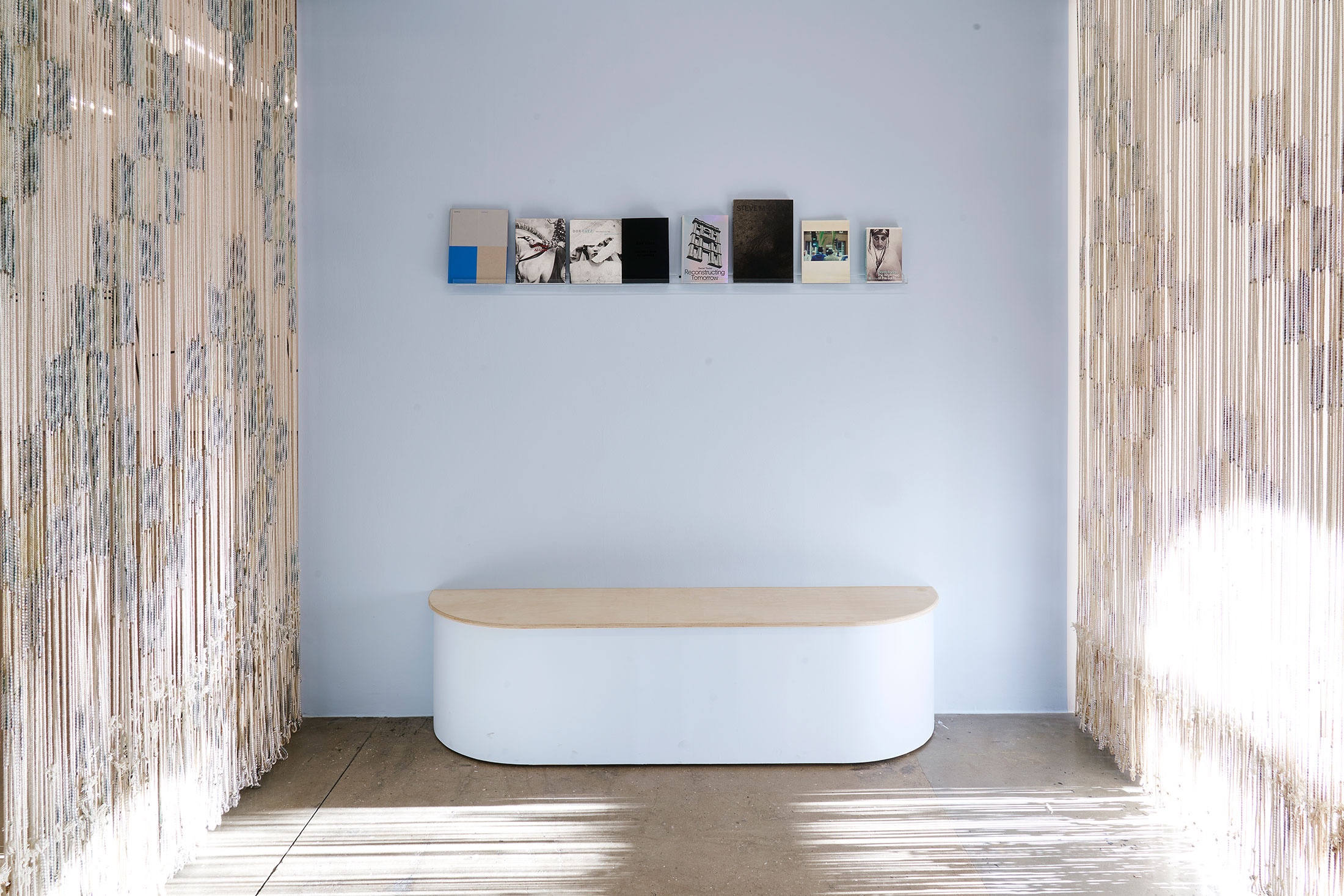
"A4 commissioned a beaded work from Igshaan Adams to coincide with the opening of our foundation’s premises in 2017. We have found ourselves calling on Al asma ul Husna, named by the artist to recall the 99 names of Allah, on many occasions since. Hung like a curtain, it lives in our Reading Room. From time to time, we carry it into our exhibitions where the work becomes a device to mark a transition. A threshold between one state and another, its fall of beads and string provides a soft boundary, a note – now, you are here. In Customs, curated by Sumayya Vally and Josh Ginsburg, 2 July–8 October 2022, Al asma ul Husna enclosed a selection of books and reading material to do with maintenance, ritual, use, and tradition.
It would be insincere to pull one work as representative of the organisation. A4 does not own a collection of artworks. Rather, we write a series of stories – about artworks that may have been included in an exhibition, stored in A4’s archive for a time, on loan from an artist, gallery, or private collection – and share these writings with the public. A selection of artworks reside in the on-site archive but the majority persist as digital artefacts – an image, together with the text that is written for them. (‘Story’ is a form of soft provenance where artworks accumulate meaning from being shared and considered). Al asma ul Husna is singular in that it is purpose-made for A4. Tending to it, we see our story."
– Sightlines wayfinder
b.1982, Cape Town
Collected under the loose description of tapestry, Igshaan Adams’ woven works offer a haptic meditation on the changeability of being, which is never static but always reworked, stitched and unstitched. To the artist, the ritual repetition necessary to his medium presents itself as spiritual simile; each bead strung a material dhikr. Much like the ninety-nine names of Allah are chanted in Sufi practice, that they might wake the dormant divine within the speaker, so weaving too is an embodied commitment to slow accumulation and transformation. Bearing witness to life’s traces and traumas as inscribed in overlooked spaces – particularly those of Bonteheuwel, a low-income suburb on the Cape Flats where Adams was raised – the artist transcribes desire lines across fields and worn paths on linoleum floors, honouring the passages of time and people that shaped them. Adams’ work is marked by both a distinct, even sensual, pleasure in the tactile, and a lyrical invocation of the immaterial; the patina of the past distilled in objects of singular beauty and quiet dedication.
